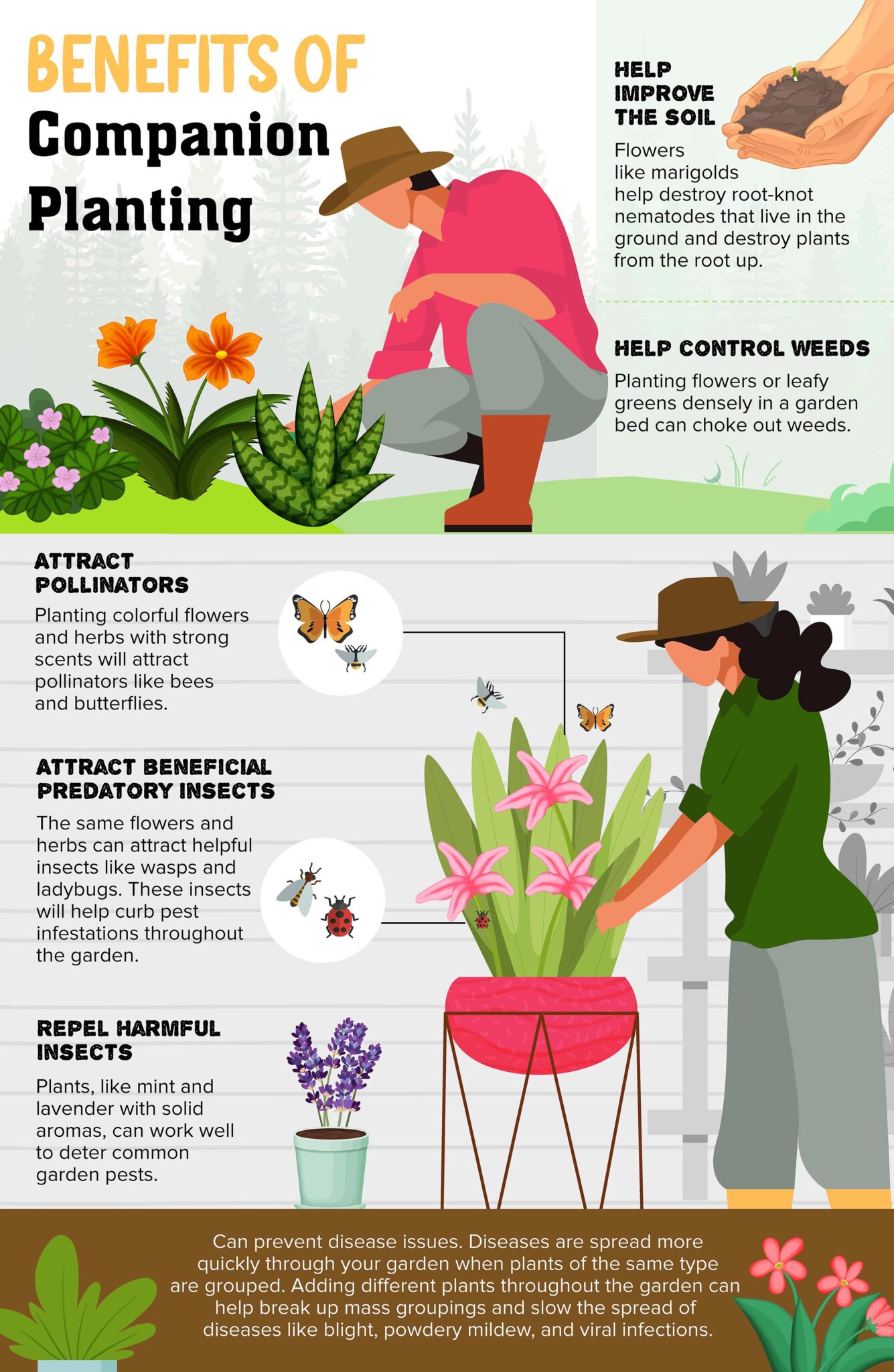The Beginner's Guide To Companion Planting: Grow A Healthy And Productive Garden
The Beginner's Guide to Companion Planting: Grow a Healthy and Productive Garden
Companion planting is a gardening practice that involves strategically planting different types of plants together to create beneficial relationships between them. By planting companion plants, you can improve the health, productivity, and pest resistance of your garden.
There are many different benefits to companion planting. Some of the most common benefits include:
- Increased pollination: Many companion plants attract beneficial insects, such as bees and butterflies, which help to pollinate your crops. This can lead to increased yields and better quality produce.
- Disease and pest control: Some companion plants can help to repel or deter pests, such as aphids, beetles, and rabbits. This can help to reduce the need for pesticides, which can be harmful to the environment and your health.
- Improved soil health: Some companion plants can help to improve the quality of your soil by adding nutrients, aerating the soil, or suppressing weeds. This can create a healthier environment for all of your plants.
- Enhanced flavor: Some companion plants can actually enhance the flavor of your vegetables. For example, planting basil near tomatoes can make the tomatoes taste sweeter.
If you're new to companion planting, there are a few things you need to know. First, you need to understand the different types of companion plants. There are three main types of companion plants:
- Attractants: These plants attract beneficial insects, such as bees and butterflies, which help to pollinate your crops and control pests. Some common attractors include marigolds, nasturtiums, and yarrow.
- Repellents: These plants repel pests, such as aphids, beetles, and rabbits. Some common repellents include garlic, onions, and chives.
- Companion crops: These plants benefit each other in some way, such as by providing shade, improving soil drainage, or suppressing weeds. Some common companion crops include tomatoes and basil, beans and corn, and cucumbers and melons.
Once you understand the different types of companion plants, you can start to plan your garden. There are many different resources available to help you with this, such as books, websites, and gardening apps.
When planning your garden, it's important to consider the size of your space, the type of soil you have, and the plants you want to grow. You should also consider the climate in your area and the amount of sunlight your garden gets.
Once you have a plan, it's time to start planting! When planting companion plants, it's important to plant them close enough together so that they can benefit each other. However, you don't want to plant them too close together, as this can lead to competition for resources.
With a little planning and effort, you can use companion planting to create a healthy and productive garden. So get out there and start planting!
Companion planting is a great way to improve the health and productivity of your garden. By planting certain plants together, you can attract beneficial insects, deter pests, and improve the overall soil quality.
If you're a beginner, it can be helpful to consult a resource like Gardenia Inspiration. This website provides a comprehensive guide to companion planting, including information on which plants grow well together and which ones should be avoided.
The website also includes a variety of helpful tips, such as how to plant companion plants, how to space them properly, and how to care for them.
Whether you're just starting out with companion planting or you're looking for more information, Gardenia Inspiration is a great resource.
Image of beginners guide to companion planting
5 different images of "beginners guide to companion planting" from Pinterest:
- Image of a chart showing companion plants that attract beneficial insects and repel pests.

- Image of a garden bed with different vegetables and herbs planted together.

- Image of a gardener planting marigolds near tomatoes.
- Image of a book titled "The Vegetable Gardener's Companion Planting Guide"
- Image of a website with a blog post about companion planting.


Post a Comment for "The Beginner's Guide To Companion Planting: Grow A Healthy And Productive Garden"